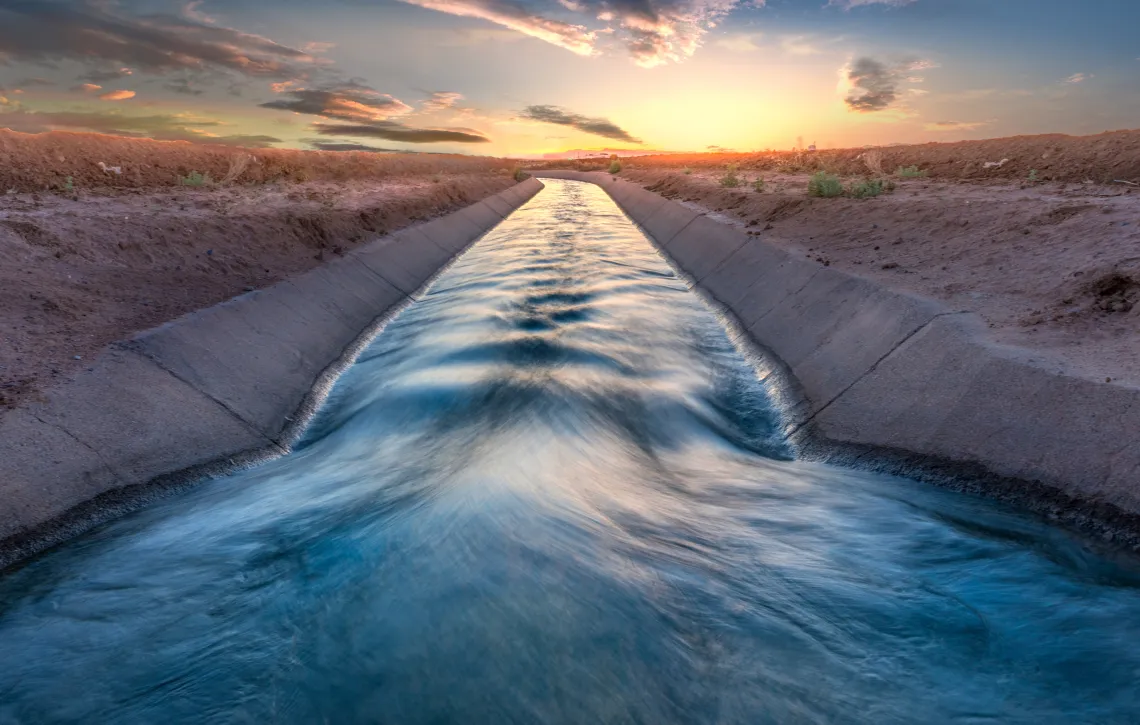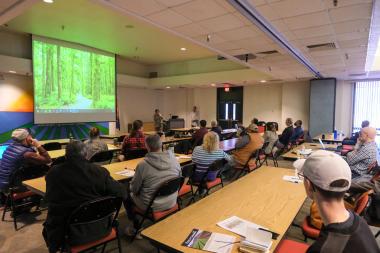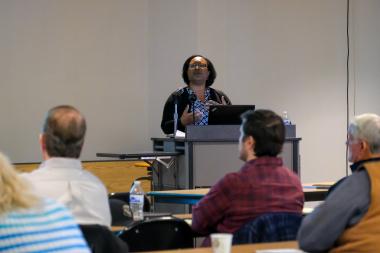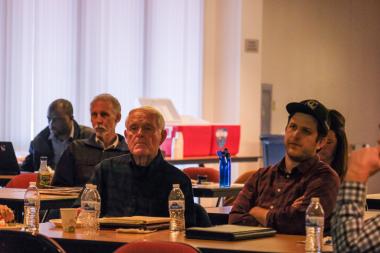UArizona researchers meet with community to share new agriculture research
Group receives $10M grant to find solutions to river and groundwater shortages for Arizona farmers, other stakeholders.

Adobe Stock
When farmers in the Southwest U.S. cannot rely on rain for their crops, which is often, they turn to irrigated systems provided by groundwater and rivers. However, major water resource issues recently occurred for Arizona farmers as local groundwater and river levels are hitting all-time lows due to climate change.

A crowd of farmers, ranchers, and other stakeholders look on as Dr. Sharon Megdal leads a conversation about irrigation agriculture research
As strict water-use restrictions are implemented(link is external) across the state, the agriculture community is turning to a new University of Arizona research project for solutions.
About the Project
UA researchers from the Environmental Science department and the Arid Lands Resource Sciences program are partnering with the University of California, Davis to conduct a five-year project to alleviate overuse of groundwater and investigate sustainable irrigated agriculture systems, amongst other goals. The project, called, "Sustaining Groundwater and Irrigated Agriculture in the Southwestern United States Under a Changing Climate," is funded by a $10 million USDA-NIFA grant.
The group is more than a year into their project and held a progress report meeting with Arizona stakeholders this week at the Maricopa Agriculture Center (MAC)(link is external) to discuss current and future endeavors, led by Dr. Sharon Megdal.
Meet the Team
Dr. Debankur Senyal – UA Environmental Science professor, soil science specialist(link is external)
Simone Williams – PhD candidate, Arid Lands Resource Sciences program(link is external)
Dr. Isaya Kisekka – UC Davis Land, Air and Water Resources professor(link is external)
The Science

Simone Williams, PhD candidate in the Arid Lands Resources Sciences program at UA, presents her research
Within the larger project, there are several active studies looking at different parts of the issue, from groundwater quality to crop cover use in the offseason.
Simone Williams’ project is modeling how water moves throughout different basins to determine what is happening to the resource and how they can better manage it. Williams showed how the land and water is currently used by different industries and to grow different crops.
She said to solve the water issue, they need to add a new perspective driven by new data.
“Management of ground water, understandably, has largely focused on the quantity side of the resource,” Simone said. “However, quality also needs to be addressed or managed if we are to sustain available resources.”
Along the similar line of quality over quantity, Dr. Senyal is examining how using crop cover in new ways can enrich the soil health and lead to greater efficiency in water-use. Crop covering is the process of growing a secondary crop in the offseason to protect the soil from weathering and unwanted plant growth, as well as provide new nutrients to the soil.
“If you have cover crops planted, healthy soil with living roots feeding those microbes, and we get rain, something good will be going on,” Dr. Sanyal said. “This system will be catching more moisture. If you get four to five inches of rain a year and this holds on to two inches more, that is almost 40 percent more water in your soil recharge.”
While cover crops are not new, Dr. Sanyal said the research on it does not represent Arizona’s environment or needs.
“When we look cover crops and soil health, the biggest issue is the lack of information,” Dr. Sanyal said.
The Community Perspective
Ron Rayner, owner of A Tumbling-T Ranches and member of the project’s advisory board, was in attendance and spoke on his firsthand experience working with University of Arizona researchers. Before this project, Rayner said he did not have access to a soil science specialist like Dr. Sanyal.

Father and son, Ron (pictured left) and Ross (pictured right) Rayner, watch on as UA researchers present their work
“Having someone here working on soil health is really important,” Rayner said. “We hired someone else to run tests two or three years ago on our soil and when we got the data back, we didn’t know what any of it meant. Now [Dr. Sanyal] is here and he looked at it and walked us through those findings.”
Rayner’s great-grandfather and his grandfather both moved from California in 1913 to continue farming in Arizona. Rayner’s father eventually started A Tumbling-T Ranches and now Rayner looks to pass along the business to his son, Ross, who was also at the meeting. Both Ron and Ross are University of Arizona graduates and often participate in the WRRC annual conference.(link is external)
When asked about why they work so closely with the University of Arizona, Ross said this work could not get done without the partnership.
“There is simply not enough time or money to try a lot of these things on our own” Ross said. “We really don’t have the resources to do this research while we are trying to farm and run a business.”
The Future
The project is still in its beginning stages as they are more than a year into the five-year grant. Dr. Kisekka and Dr. Megdal gave overviews of where the project is headed. A key component to their future is the three-pronged approach set by the grant.
“This project is one of USDA-NIFA’s largest projects,” Dr. Kisekka said. “They have a program called Sustainable Agricultural Systems (SAS) that awarded the grant, and with it you have to do research, extension, and education.”
With these requirements, their goals reach beyond the farms and labs and make their way into classrooms as well. Their planned programs will reach all levels of education, including K-12, colleges and universities, and workforce development.
The group plans to continue holding progress report meetings and to share their work at events like the WRRC conference. Click here to learn more details about the project.
